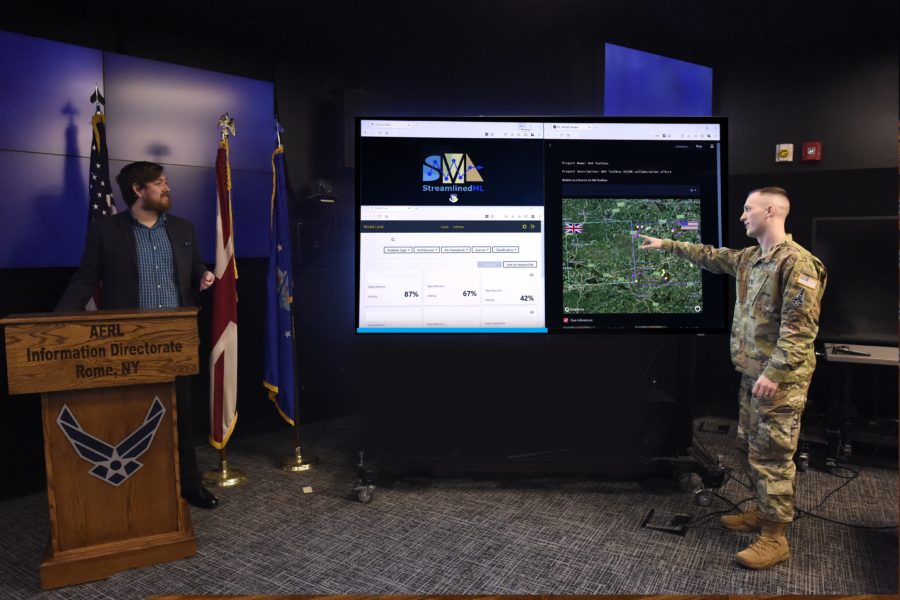Held an ocean apart but simulating adjacent military forces, a virtual demonstration Oct. 18 gave the U.K. and U.S. militaries cause to project optimism over someday jointly adopting artificial intelligence “that can learn in the field.”
The test represented “just the first step” on the way to an “experimental trial environment,” according to an Oct. 20 news release. It also demonstrated the “integration of 15 state-of-the-art machine learning algorithms, 12 U.K. and U.S. data sets, [five] automated MT workflows for training and retraining models based on mission needs, and the ability to deploy the models as a service to … end users and platforms.”
The Air Force Research Laboratory leads the U.S.’s side of the AI partnership agreement, made in December 2020 with the U.K.’s Defence Science and Technology Laboratory, enabling the demonstration. The AFRL didn’t immediately respond to a request for more details about the test scenario and what the algorithms do by press time.
“This research is designed to support adjacent, collaborating U.S. and UK brigades with enduring wide-area situational awareness, which aims to improve decision-making, increase operational tempo, reduce risk to life, and reduce manpower burden,” according to the release. The four-year agreement covers the sharing of technology in research as well as joint experiments that advance the concept of joint all-domain command and control.
In general, machine learning—a branch of artificial intelligence—involves “training” a set of automated procedures, or algorithms, with “labeled” data sets to recognize patterns in new data, make predictions, and improve at the task.
“The demonstration highlighted integrated AI technologies across the two nations, showcasing the ability to share data and algorithms through a common development and deployment platform to enable the rapid selection, testing, and deployment of [AI] capabilities,” according to the release. “It was the first of a rotational series of events” to be hosted by the two countries.
Participants took part from across military services, led from the AFRL’s Information Directorate in Rome, N.Y., and the U.K. lab’s site near Salisbury. Quoted in the news release, the U.S. Army’s chief roboticist in its Combat Capabilities Development Command, Robert W. Sadowski, alluded to aspects of the test, saying, “Advances in robotics and autonomy will make our formations more capable and mission-ready while providing protection to our warfighters through unprecedented stand-off.”
The Air Force has deployed AI algorithms in what Air Force Secretary Frank Kendall described as “a live operational kill chain” during his remarks at the Air Force Association’s Air, Space & Cyber Conference in September. An Air Force spokesperson told Air Force Magazine at the time that the algorithms are available at all of the Air Force’s Distributed Common Ground System sites and any air operations center.
Secretary of Defense Lloyd J. Austin III said at the National Security Commission for Artificial Intelligence’s Global Emerging Technology Summit in July that more than 600 AI efforts were taking place across the department. The federal commission has since completed its work, after publishing a 756-page report, but a private foundation is picking up where it left off.
Meanwhile, the Senate Armed Services Committee on Oct. 19 proposed adding, above amounts proposed by the Biden administration, $600 million to the fiscal 2022 National Defense Authorization Act for AI for unified combatant commands and recruiting AI talent.
